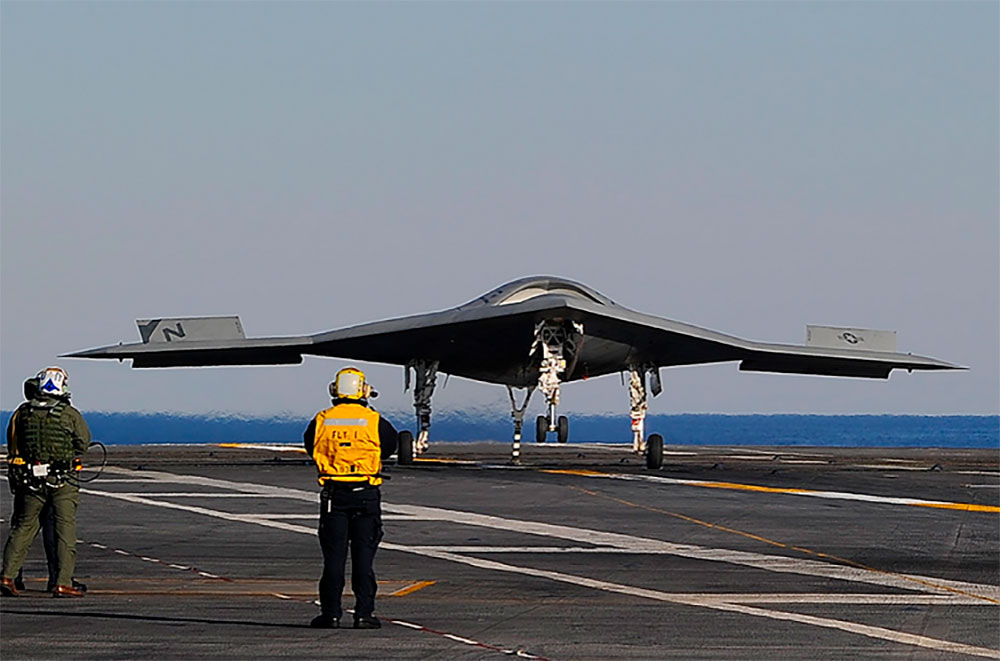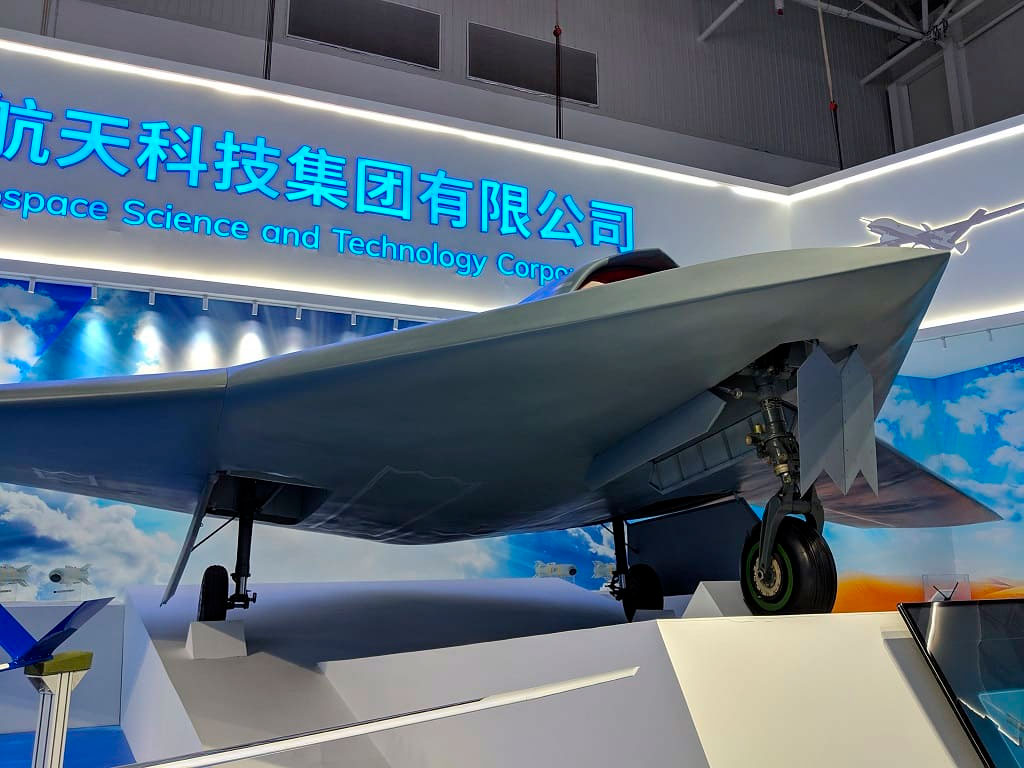The CASC CH-7 is a high-altitude, long-endurance stealth combat drone with a 22-meter wingspan, 10-meter length, and 15-hour endurance.
The CASC CH-7 is a high-altitude, long-endurance (HALE) stealth unmanned combat aerial vehicle (UCAV) developed by the China Aerospace Science and Technology Corporation (CASC). Featuring a flying-wing design, it measures 10 meters (32.8 feet) in length with a wingspan of 22 meters (72 feet). The drone is powered by a single turbofan engine, enabling a maximum speed of 920 km/h (575 mph) and an operational ceiling of 13,000 meters (42,650 feet). It boasts an endurance of approximately 15 hours and an operational radius of 2,000 kilometers (1,240 miles). The CH-7 is equipped to carry anti-radiation missiles and standoff weapons, making it suitable for intelligence, surveillance, reconnaissance (ISR), and precision strike missions.
History of the Development of the CASC CH-7
In the early 21st century, advancements in air defense systems prompted military powers to invest in stealth technology and unmanned systems. Recognizing the need for a platform capable of penetrating sophisticated defenses, the China Aerospace Science and Technology Corporation (CASC) initiated the development of the CH-7. The objective was to create a high-altitude, long-endurance unmanned combat aerial vehicle (UCAV) that could conduct intelligence, surveillance, reconnaissance (ISR), and precision strike missions while minimizing the risk of detection.
The CH-7 was publicly unveiled at the Zhuhai Airshow in November 2018, where a full-scale model was displayed. At that time, CASC announced plans for the drone’s maiden flight in 2019, with production expected to commence by 2022. However, specific details regarding the actual first flight have not been publicly disclosed. As of 2024, reports indicate that the CH-7 has completed testing and is on schedule to conclude development within the year.
The development of the CH-7 aligns with China’s broader military modernization efforts, emphasizing the integration of advanced technologies into its defense apparatus. The drone’s design reflects lessons learned from earlier UAV projects and showcases China’s growing expertise in aerospace engineering. Notably, the CH-7’s flying-wing configuration bears a resemblance to other stealth UAVs, such as the U.S. X-47B, indicating a convergence in design philosophies aimed at reducing radar cross-sections and enhancing aerodynamic efficiency.
Throughout its development, the CH-7 has been presented as a versatile platform capable of performing a variety of roles. Its ability to conduct ISR missions, coupled with its capacity to carry precision-guided munitions, positions it as a valuable asset for modern military operations. The drone’s stealth features enable it to operate in contested environments, providing a strategic advantage in scenarios where airspace is heavily defended.

Design of the CASC CH-7
The CASC CH-7 features a flying-wing design, a configuration chosen for its aerodynamic efficiency and reduced radar cross-section. This design minimizes surfaces that can reflect radar waves, enhancing the drone’s stealth capabilities. The airframe measures 10 meters (32.8 feet) in length and has a wingspan of 22 meters (72 feet), providing a balance between size and performance.
The drone is powered by a single turbofan engine, which is mounted dorsally with an intake on the upper surface of the fuselage. This placement reduces the engine’s infrared signature and further contributes to the aircraft’s stealth profile. The exhaust is designed to minimize heat emissions, decreasing the likelihood of detection by infrared tracking systems.
The CH-7’s airframe is constructed using advanced composite materials, which offer high strength-to-weight ratios and contribute to the overall reduction in weight. These materials also aid in absorbing radar waves, complementing the drone’s stealth characteristics. The absence of vertical stabilizers and the smooth, blended surfaces of the flying-wing design reduce radar reflectivity, making the CH-7 less visible to radar systems.
Internally, the CH-7 houses a spacious payload bay capable of accommodating various mission-specific equipment. This internal carriage ensures that weapons and sensors do not compromise the drone’s stealth profile. The payload bay can be configured to carry anti-radiation missiles, standoff weapons, or electronic warfare equipment, depending on mission requirements.
The drone’s avionics suite includes advanced sensors and communication systems, enabling real-time data transmission and remote control. The CH-7 is equipped with systems capable of intercepting radar electronic signals, allowing it to detect, verify, and monitor high-value targets such as command stations, missile launch sites, and naval vessels.
Performance of the CASC CH-7
The CASC CH-7 is powered by a single turbofan engine, enabling a maximum speed of approximately 920 km/h (575 mph). It operates effectively at altitudes up to 13,000 meters (42,650 feet), allowing it to conduct missions above many air defense systems’ effective range. The drone’s endurance is around 15 hours, providing substantial loitering capability over target areas. Its operational radius reaches 2,000 kilometers (1,240 miles), facilitating deep penetration into contested territories.
In comparison to similar platforms, the CH-7’s performance metrics align closely with other high-altitude, long-endurance (HALE) stealth drones. For instance, the U.S. Northrop Grumman X-47B shares a comparable flying-wing design and stealth capabilities. However, specific performance data for the X-47B, such as speed and range, remain classified, making direct comparisons challenging. Nonetheless, the CH-7’s combination of speed, altitude, and endurance positions it as a formidable asset in modern aerial warfare, capable of performing both ISR and precision strike missions while minimizing the risk of detection.
The CH-7’s internal weapons bay allows it to carry a variety of munitions, including anti-radiation missiles and standoff weapons. This internal carriage maintains the drone’s low observable profile by reducing external radar reflections. The ability to carry anti-radiation missiles enables the CH-7 to engage enemy radar installations, suppressing air defenses and facilitating operations for other aircraft. Standoff weapons provide the capability to strike targets from a distance, minimizing exposure to hostile defenses.
The drone’s stealth features, such as its flying-wing design and the use of radar-absorbent materials, significantly reduce its radar cross-section. This stealth capability allows the CH-7 to operate in contested environments with a lower risk of detection compared to non-stealth platforms. Its high-altitude operational ceiling further enhances survivability by placing it above the reach of many surface-to-air missile systems.
In terms of sensor capabilities, the CH-7 is equipped with advanced systems for intelligence gathering. These sensors enable the detection, verification, and monitoring of high-value targets, including command centers, missile launch sites, and naval vessels. The drone’s ability to intercept radar electronic signals enhances its situational awareness and targeting precision.
Overall, the CH-7’s performance characteristics, combined with its stealth design and advanced sensor suite, make it a versatile platform capable of conducting a range of missions in high-threat environments. Its development reflects a significant advancement in unmanned aerial vehicle technology, aligning with modern military doctrines that emphasize the importance of stealth, endurance, and precision in aerial combat operations.

Variants
As of now, there are no publicly known variants of the CH-7. The platform has been presented primarily as a high-altitude, long-endurance stealth combat drone with capabilities encompassing both reconnaissance and strike missions. Future developments may lead to specialized versions tailored for specific operational requirements, but no official announcements have been made regarding such variants.
The CASC CH-7 is designed to carry a variety of munitions within its internal weapons bay, including anti-radiation missiles and standoff weapons. The internal carriage of weapons preserves the drone’s stealth profile by minimizing radar reflections. The specific types and numbers of munitions the CH-7 can carry have not been publicly disclosed, but its design suggests a focus on precision-guided munitions suitable for high-value target engagement.
Military use of the CH-7
As of January 2025, there are no confirmed reports of the CH-7 being deployed in active combat operations. The drone has been showcased at various airshows, including the Zhuhai Airshow, where its capabilities have been highlighted. The CH-7 is expected to serve in roles such as intelligence, surveillance, reconnaissance (ISR), and precision strikes, particularly in contested environments where its stealth features provide a tactical advantage.
The CH-7 has not been reported to be in service with any foreign military forces. Its advanced capabilities and stealth design make it a significant asset for modern military operations, but as of now, it remains primarily within the purview of the Chinese military.
The CASC CH-7 is a high-altitude, long-endurance stealth combat drone designed for ISR and precision strike missions. Its flying-wing design and use of advanced materials contribute to a reduced radar cross-section, enhancing its survivability in contested environments. The drone’s performance characteristics, including its speed, operational ceiling, and endurance, position it as a formidable platform in modern aerial warfare. While specific details about its operational history and export status are limited, the CH-7 represents a significant advancement in unmanned combat aerial vehicle technology.
Back to the Drones, UAVs, UCAVs page